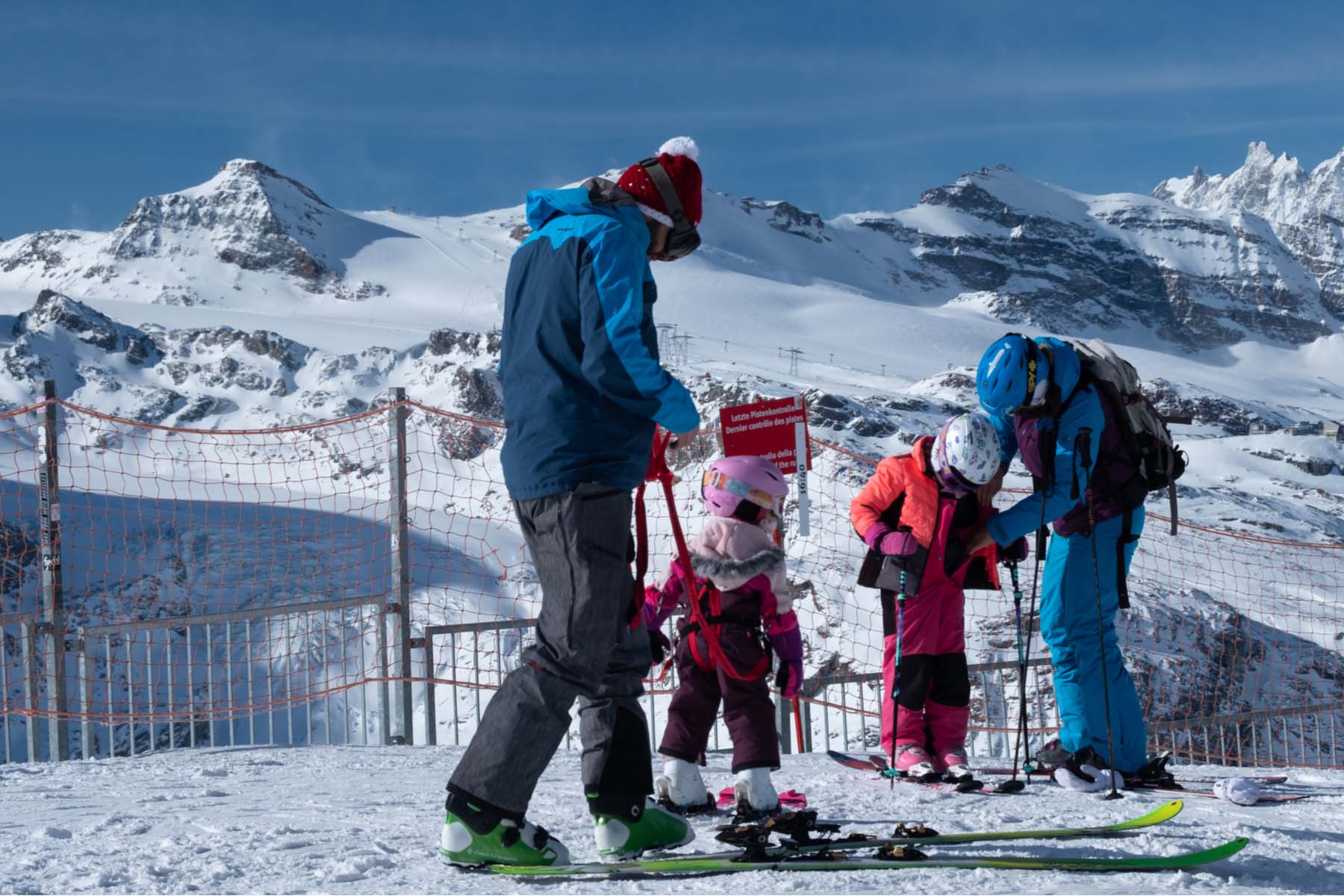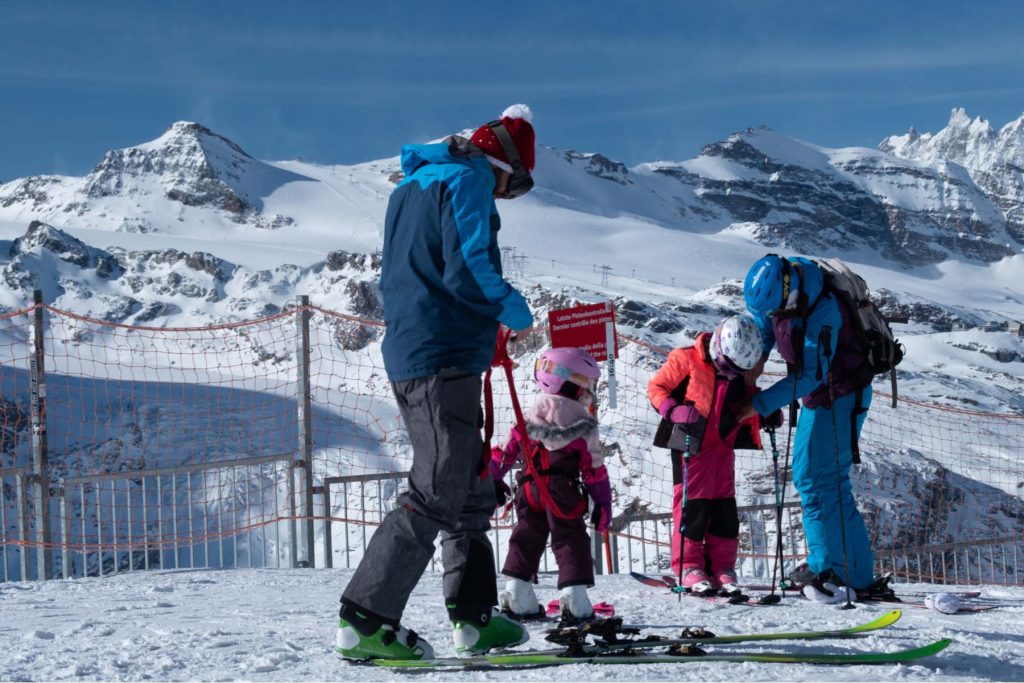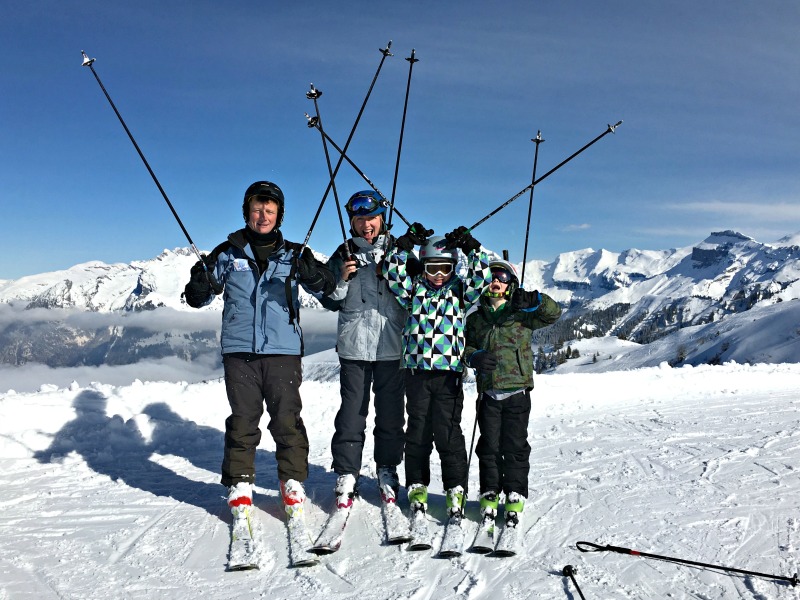There is nothing more stressful than finding yourself skiing with a young child unless you have to run across a highway as a daily game…
However, a few precautions can improve daily life and reduce the stress of the person in charge, provided that the skiers around also have in mind that a child does not react like an adult. And for good reason!
The context
Know that a child has a limited field of vision: he sees in front of him but wears blinders and does not understand the danger coming from the sides.
What parent hasn’t been annoyed to see his kid looking for something obvious, almost under his nose but not quite, without being able to find it, or taking ages?
So on skis, in motion, a child can’t see much, especially since most of the time, he has mediocre equipment, including a mask that you would never want to ski with. If we add that he never cleans it, does not complain about not being able to see anything, we might as well say that he skis at night…
You might as well take this into account, as a parent but also as a skier, when you have to pass a kid. The second point of importance, a child skis on skates that can turn on themselves.
He can change direction and make a 90° turn in a fraction of a second, which an adult cannot, his skis being longer but also his important inertia, carrying him straight ahead. Always keep in mind that this is the cause of many collisions and in freeskiing, always keep a large safety margin when overtaking a child.
The last notable difference is that a young child can have reactions that are incomprehensible to an adult, which means that you cannot anticipate, such as lying flat on your skis while braking… Don’t laugh, it’s a classic!
The right gestures
No matter how clearly you explain things, your young children (from 4 to 7 years old) will do as they please, at least enough to be unreliable. It is therefore up to you to take responsibility for their safety…
Skiing behind: contrary to popular belief, it is better to follow your children than to lead the way, except on a wide slope with very little incline.
This way, you protect your child from untimely collisions by reacting as well as possible to his changes of course. It is not very pleasant in terms of skiing but quite effective, especially in narrow passages.
Several kits exist today allowing you to hold or break your little skier with a strap via a belt/harness.
This allows you to stay behind him, even in a steep section. Otherwise, you have to go in front of him in order to block him in case of a fall and not to let him take speed.
Stay on easy slopes: it’s always the same thing as soon as the kid starts to make turns at 20 km/h, the parents feel like they have wings and go to discover the wide world with their family.
However, it is better to stay on easy slopes where the child will tend to enjoy the ride more, to tighten his feet a little more, and to stay upright rather than sitting down in a snowplow.
By venturing onto a steeper slope, you risk blocking the child if he/she gets scared and developing bad movement habits. Counterproductive…
Do not take yourself for an instructor: skiing with your child when he/she is a beginner must be done in addition to his/her passage in ski school.
First of all, you are not an instructor, so you are not necessarily able to provide a good learning experience. Above all, if you are skiing, it is to ski! Paying for a ski pass and not taking advantage of it is not an economy, it is a stress and the best way to turn the day into a big fight…
Summary of the ski equipment for children
The helmet: it must be the right size and brightly colored. Too big, it is simply ineffective. Some models are equipped with LED: the top!
The back protector: it is designed to absorb rear shocks (collision with a skier, a pole …) and must also be in the size. Generally, the models are adjustable and scalable, within reason.
The mask: remember to maintain it, that is to say to clean it regularly and to protect it during transport. Also think about adapting the lens according to the weather because a child who can’t see is not completely safe on skis…
Light: bicycle helmets sometimes have flashing LEDs to increase visibility, this is not sufficiently the case for skiing.
There are plenty of accessories to fix yourself in the bike department. With a little bit of cleverness, it can be adapted to the belt of the suit, to the elastic of the mask, etc. In case of white days, reduced visibility, snow or fog, it brings some serenity.



